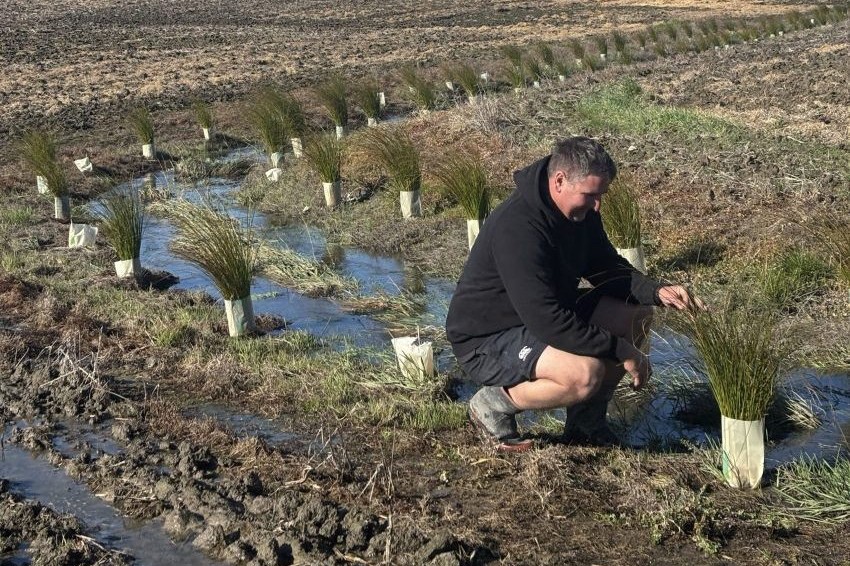Science and the critique
Jacqueline Rowarth responds to the Minister of Agriculture's assertion that scientists' criticism of regenerative agriculture is "just misinformation."

When the Ministry for Primary Industries launched Fit for a Better World back in 2020, the ministry expressed a desire to design a New Zealand-based regenerative farming approach. “In doing so,” stated the launch document, “there is an expectation that regenerative farming systems will improve the profitability of farming while leaving behind a smaller environmental footprint.”
So far, neither has happened and lessons from organic production systems indicate that there is no reason to expect a change. There is no consistent, credible research that supports the statements that production increases after a period of adjustment.
The Minister of Agriculture Damien O’Connor told the Greenhouse Gas Conference in 2021:
“So called scientists criticising regenerative agriculture should be keeping an open mind – criticism is just misinformation.”
Critiquing (not criticising) is one of the roles of a scientist. A concept is examined from as many sides as possible, set within context (e.g. country, environment and previous research results) and, possibly, an hypothesis for testing formulated.
Regenerative agriculture has been receiving this examination.
On the positive side, NZ scientists and rural professionals are doing their best to evaluate the claims being made about the benefits of regenerative agriculture (RA), supported by an estimated $55 million from the Government and industry so far.
Money better spent?
Whether this money could be put to better use has been asked by farmers and scientists for some time. Considerable research over decades has enabled the New Zealand pastoral system to be world leading. It is a system of constant innovation, adaptation and improvement, so it is hard to see how regenerative agriculture, based on hyper-diverse pastures and long-pasture grazing might improve things.
On the negative side are the results of the research comparing conventional and regenerative systems – they are not positive. Whether drystock or dairy, results are showing decreased food production, decreased income and no decrease in greenhouse gases per kg of product and in the latest report for drystock, GHG were found to increase per kg of product.
Predictions and explanations for NZ have been published by Massey University (Farmed Landscape Research Centre Conferences) and the NZ Grassland Association since 2020. The papers have been written in an attempt to bring research results that might have been forgotten to the fore. But the RA bandwagon has continued.
The latest research report, Regenerative Agriculture Value Proposition: Final Report was funded by Our Land and Water and is available on the website (see links below). The study involved 16 paired (one conventional and one regenerative) farms, two pairs in Northland, three in Waikato, two in Taranaki and one in Canterbury.
Annual accounts and Farmax modelling were used to make the analyses. In comparison with conventional farms, regenerative farms produced 125kg/ha less meat and wool, a reduction from 326kg/ha to 201kg/ha (38%). As meat and wool were the main income streams, and costs of production were not decreased, earnings before interest, tax, rent and management wage were also decreased – from $613/ha to $273/ha (55%).
Farmax modelling indicated that GHG emissions intensity for conventional farms was 16.3kg CO2e/kg product in comparison with 20.2kg CO2e/kg product for regenerative farms. In this case the increase indicates each kg of regenerative meat and wool was associated with 24% more GHG than conventionally raised meat and wool.
More disappointment is in the results for meat quality published in December 2021, again available on the Our Land and Water website and involving some of the same researchers. There were no significant differences in the omega fatty acids in the meat, nor the ratio between them, whether conventionally or regeneratively produced. The increase in omega 3 and 6 fatty acids and the ratio between them are often highlighted in organic versus grain-fed meat and milk because they are considered to be beneficial to human health.
The researchers commented that a difference might have been obtained if the pastures being grazed on the regenerative farms had had more species. The downside from other research is maintaining pasture quality when diverse species are becoming reproductive at different times, and a decrease in pasture quality is associated with increased GHG per unit of production. Exacerbating this is the fact that in NZ, hyperdiverse pastures don’t produce as much as the traditional grass, legume and herb mixes that are common (species depending on farm type and area). A potential reduction in quantity and quality results in slower growing animals and that means increased GHG over a lifetime.
The researchers in the Our Land and Water programme were clear that regardless of farm type, “all farmers involved in the project sought to maintain a financially viable business, to maintain healthy soils, pastures, and livestock, and to improve the land”. The relative importance of these factors did, however, differ between the two farm types.
Results from paired dairy farms on the Canterbury Plains have also indicated a 22% reduction in milk, with a 24% reduction in earnings before interest and tax. However, in the Canterbury dairy trial GHG per kg of milk was the same whether the milk was produced conventionally or regeneratively. First-year results indicate a reduction in soil organic matter, possibly reflecting cultivation to establish hyper-diverse pastures.
The big negative in the focus on RA in NZ is the opportunity cost in what might have been achieved with $55 million invested in, for instance, hill country pasture species and animal management. Or a long-acting ruminant methane inhibitor. Of course there will be people justifying the investment in conventional-regenerative comparisons, but at heart, they probably know that what they think they have achieved could have been done as part of a progressive research project.
This points to the big problem – there is insufficient research investment in NZ to fund the work that is needed to enable farmers to produce animal protein with even less environmental impact than already achieved. Although more funding was announced in the last budget, inflation and a reduction in funding over the years has eroded critical mass and confidence. The result is that scientists try to put the research they have identified as having potential to make a difference into a package that fits where the Government is investing.
The question remains how agricultural scientists, researchers and rural professionals can swing their work back to where it can make a difference for the future – testing new ideas rather than confirming why the old ones haven’t become mainstream, and working with farmers in their goals of constant improvement to ensure they maintain their world-leading position in producing animal protein with least environmental impact. Critiquing is fundamental to making that improvement.
ourlandandwater.nz/outputs/regenerative-agriculture-value-proposition-final-report/
ourlandandwater.nz/wp-content/uploads/2022/11/RPF15_NewGround_we-are-what-we-eat.pdf
- Dr Jacqueline Rowarth, Adjunct Professor Lincoln University, has a PhD in Soil Science (nutrient cycling) and is a Director of Ravensdown, DairyNZ and Deer Industry NZ. The analysis and conclusions above are her own. jsrowarth@gmail.com




